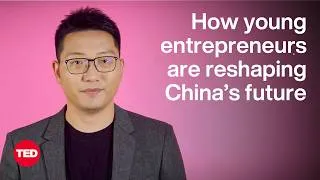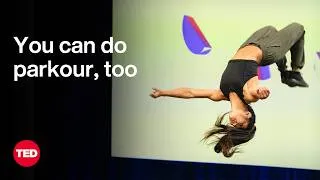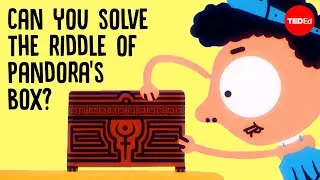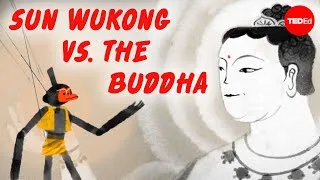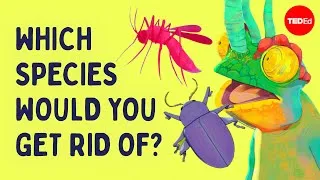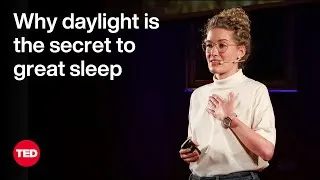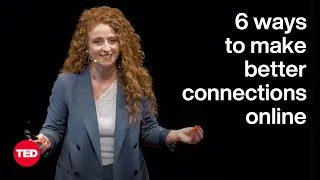請雙擊下方英文字幕播放視頻。
譯者: Ching-Yuan Chen
審譯者: Wang-Ju Tsai
00:15
Good morning everybody.
0
15260
3000
早安各位
00:18
I work with really amazing,
1
18260
2000
我的工作是關於非常驚人的
00:20
little, itty-bitty creatures called cells.
2
20260
3000
微小生物,它們叫做細胞
00:23
And let me tell you what it's like
3
23260
2000
讓我告訴你們如何
00:25
to grow these cells in the lab.
4
25260
2000
在實驗室裡培養這些細胞
00:27
I work in a lab where we take cells out of their native environment.
5
27260
3000
在實驗室中,我們將細胞從它們的原生環境取出
00:30
We plate them into dishes
6
30260
2000
我們將它們放置到碟子中
00:32
that we sometimes call petri dishes.
7
32260
2000
有時我們稱這些碟子為培養皿
00:34
And we feed them -- sterilely of course --
8
34260
3000
我們當然是用無菌的方式餵食這些細胞
00:37
with what we call cell culture media -- which is like their food --
9
37260
3000
用的是稱為細胞培養基的東西,這就如同它們的食物
00:40
and we grow them in incubators.
10
40260
3000
然後我們在培養機中培養它們
00:43
Why do I do this?
11
43260
2000
為什麼我要這麼做?
00:45
We observe the cells in a plate,
12
45260
2000
我們觀察培養皿中的細胞
00:47
and they're just on the surface.
13
47260
2000
它們都分佈在培養基的表面
00:49
But what we're really trying to do in my lab
14
49260
3000
但我們在實驗室裡想做的是
00:52
is to engineer tissues out of them.
15
52260
3000
利用它們做出組織
00:55
What does that even mean?
16
55260
2000
而這到底是什麼意思呢?
00:57
Well it means growing an actual heart,
17
57260
2000
意思是培養一顆真的心臟
00:59
let's say,
18
59260
2000
又例如
01:01
or grow a piece of bone
19
61260
2000
培養一塊骨頭
01:03
that can be put into the body.
20
63260
2000
能放到身體裡面的骨頭
01:05
Not only that, but they can also be used for disease models.
21
65260
3000
不但如此,它們也能用於疾病模型
01:08
And for this purpose, traditional cell culture techniques
22
68260
2000
但如果要這麼做,傳統的細胞培養技術
01:10
just really aren't enough.
23
70260
2000
就略顯不足了
01:12
The cells are kind of homesick;
24
72260
2000
這些細胞有點適應不良
01:14
the dish doesn't feel like their home.
25
74260
2000
培養皿一點都不像它們生長的地方
01:16
And so we need to do better at copying their natural environment
26
76260
2000
因此我們需要在複製它們的自然環境方面加強
01:18
to get them to thrive.
27
78260
2000
才能使它們成長茁壯
01:20
We call this the biomimetic paradigm --
28
80260
2000
我們稱這個技術為「仿生式樣」
01:22
copying nature in the lab.
29
82260
3000
也就是在實驗室中複製自然環境
01:25
Let's take the example of the heart,
30
85260
2000
我們拿心臟來當例子好了
01:27
the topic of a lot of my research.
31
87260
2000
這是我研究很多的主題
01:29
What makes the heart unique?
32
89260
2000
心臟獨特之處在那裡?
01:31
Well, the heart beats,
33
91260
2000
心臟會跳動
01:33
rhythmically, tirelessly, faithfully.
34
93260
3000
很規律、很不倦地、忠誠地跳動
01:36
We copy this in the lab
35
96260
2000
我們在實驗室裡複製心跳
01:38
by outfitting cell culture systems with electrodes.
36
98260
3000
方法是在細胞培養系統加入電極
01:41
These electrodes act like mini pacemakers
37
101260
2000
這些電極功能就像迷你心律調整器
01:43
to get the cells to contract in the lab.
38
103260
3000
能夠讓細胞在實驗室裡收縮
01:46
What else do we know about the heart?
39
106260
2000
此外,我們對心臟還知道些什麼?
01:48
Well, heart cells are pretty greedy.
40
108260
2000
心臟細胞是非常耗能的
01:50
Nature feeds the heart cells in your body
41
110260
2000
大自然必須用很充沛的血液量
01:52
with a very, very dense blood supply.
42
112260
2000
來維持體內的心臟細胞的運作
01:54
In the lab, we micro-pattern channels
43
114260
2000
在實驗室裡,我們用生物材料
01:56
in the biomaterials
44
116260
2000
製作微小的管道
01:58
on which we grow the cells,
45
118260
2000
然後我們在那上面培養細胞
02:00
and this allows us to flow the cell culture media, the cells' food,
46
120260
3000
這樣我們才能將細胞培養基,也就是細胞的食物
02:03
through the scaffolds where we're growing the cells --
47
123260
3000
注入我們培養細胞的支架
02:06
a lot like what you might expect
48
126260
2000
很像我們印象中的
02:08
from a capillary bed in the heart.
49
128260
2000
心臟微血管床
02:10
So this brings me to lesson number one:
50
130260
3000
這樣我們就可以開始進入主題了:
02:13
life can do a lot with very little.
51
133260
3000
生命即使在匱乏的環境中也能成就非凡
02:16
Let's take the example of electrical stimulation.
52
136260
2000
我們用電刺激來舉個例子好了
02:18
Let's see how powerful just one of these essentials can be.
53
138260
3000
我們來看看這個要素本身的功能有多強大
02:22
On the left, we see a tiny piece of beating heart tissue
54
142260
3000
在左邊,我們可以看見一小塊在跳動的心臟組織
02:25
that I engineered from rat cells in the lab.
55
145260
2000
這是我在實驗室中從老鼠細胞做出來的
02:27
It's about the size of a mini marshmallow.
56
147260
2000
它跟迷你棉花糖一樣大
02:29
And after one week, it's beating.
57
149260
2000
一個禮拜後,它開始跳動了
02:31
You can see it in the upper left-hand corner.
58
151260
2000
你可以在左上角的圖中看到
02:33
But don't worry if you can't see it so well.
59
153260
2000
如果你看不清楚也不用擔心(因為跳動非常細微)
02:35
It's amazing that these cells beat at all.
60
155260
3000
這些細胞光是會跳動就很令人驚奇了
02:38
But what's really amazing
61
158260
2000
但是真正令人驚訝的是
02:40
is that the cells, when we electrically stimulate them,
62
160260
2000
當我們用電刺激這些細胞時
02:42
like with a pacemaker,
63
162260
2000
就像用一個心律調整器一樣
02:44
that they beat so much more.
64
164260
2000
這些細胞跳得更有生命力了
02:46
But that brings me to lesson number two:
65
166260
2000
再來我要講第二課了:
02:48
cells do all the work.
66
168260
2000
所有的工作交給細胞就好了
02:50
In a sense, tissue engineers have a bit of an identity crisis here,
67
170260
3000
就某方面來說,組織工程師有一點身份認同的危機
02:53
because structural engineers
68
173260
2000
因為結構工程師
02:55
build bridges and big things,
69
175260
3000
建造橋樑及巨大的物體
02:58
computer engineers, computers,
70
178260
2000
電腦工程師當然就是電腦了
03:00
but what we are doing
71
180260
2000
但我們所從事的工作
03:02
is actually building enabling technologies for the cells themselves.
72
182260
3000
其實是建造一個科技來啟動細胞本身
03:05
What does this mean for us?
73
185260
2000
這對我們來說代表著什麼呢?
03:07
Let's do something really simple.
74
187260
2000
我們來做一件簡單的事
03:09
Let's remind ourselves
75
189260
2000
我們來提醒自己
03:11
that cells are not an abstract concept.
76
191260
3000
細胞並不是一個抽象的概念
03:14
Let's remember that our cells sustain our lives
77
194260
3000
我們要記得,細胞維持著我們的生命
03:17
in a very real way.
78
197260
2000
用的是非常真實的方式
03:19
"We are what we eat," could easily be described
79
199260
3000
「我們吃什麼就像什麼」可以簡單得說成
03:22
as, "We are what our cells eat."
80
202260
2000
「細胞吃什麼,我們就像什麼」
03:24
And in the case of the flora in our gut,
81
204260
2000
例如我們腸道內的菌群
03:26
these cells may not even be human.
82
206260
3000
這些細胞甚至不是人體的
03:30
But it's also worth noting
83
210260
2000
還值得注意的是
03:32
that cells also mediate our experience of life.
84
212260
3000
細胞還調節著我們對人生的體驗
03:35
Behind every sound, sight, touch, taste and smell
85
215260
3000
在聽覺、視覺、觸覺、味覺、嗅覺的背後
03:38
is a corresponding set of cells
86
218260
2000
各有一組對應的細胞
03:40
that receive this information
87
220260
2000
來接受訊息
03:42
and interpret it for us.
88
222260
2000
並為我們詮釋
03:44
It begs the question:
89
224260
2000
而這也把我們帶到了這個問題:
03:46
shall we expand our sense of environmental stewardship
90
226260
3000
我們是否該擴展對環境管理的概念
03:49
to include the ecosystem of our own bodies?
91
229260
3000
並納入我們自身的生態環境呢?
03:52
I invite you to talk about this with me further,
92
232260
2000
我歡迎你們和我更進一步的探討這個話題
03:54
and in the meantime, I wish you luck.
93
234260
3000
而在那之前,我要祝大家好運
03:57
May none of your non-cancer cells
94
237260
2000
希望大家的非癌細胞都不會
03:59
become endangered species.
95
239260
2000
成為瀕臨絕種的生物
04:01
Thank you.
96
241260
2000
謝謝大家
04:03
(Applause)
97
243260
4000
(掌聲)
New videos
關於本網站
本網站將向您介紹對學習英語有用的 YouTube 視頻。 您將看到來自世界各地的一流教師教授的英語課程。 雙擊每個視頻頁面上顯示的英文字幕,從那裡播放視頻。 字幕與視頻播放同步滾動。 如果您有任何意見或要求,請使用此聯繫表與我們聯繫。
